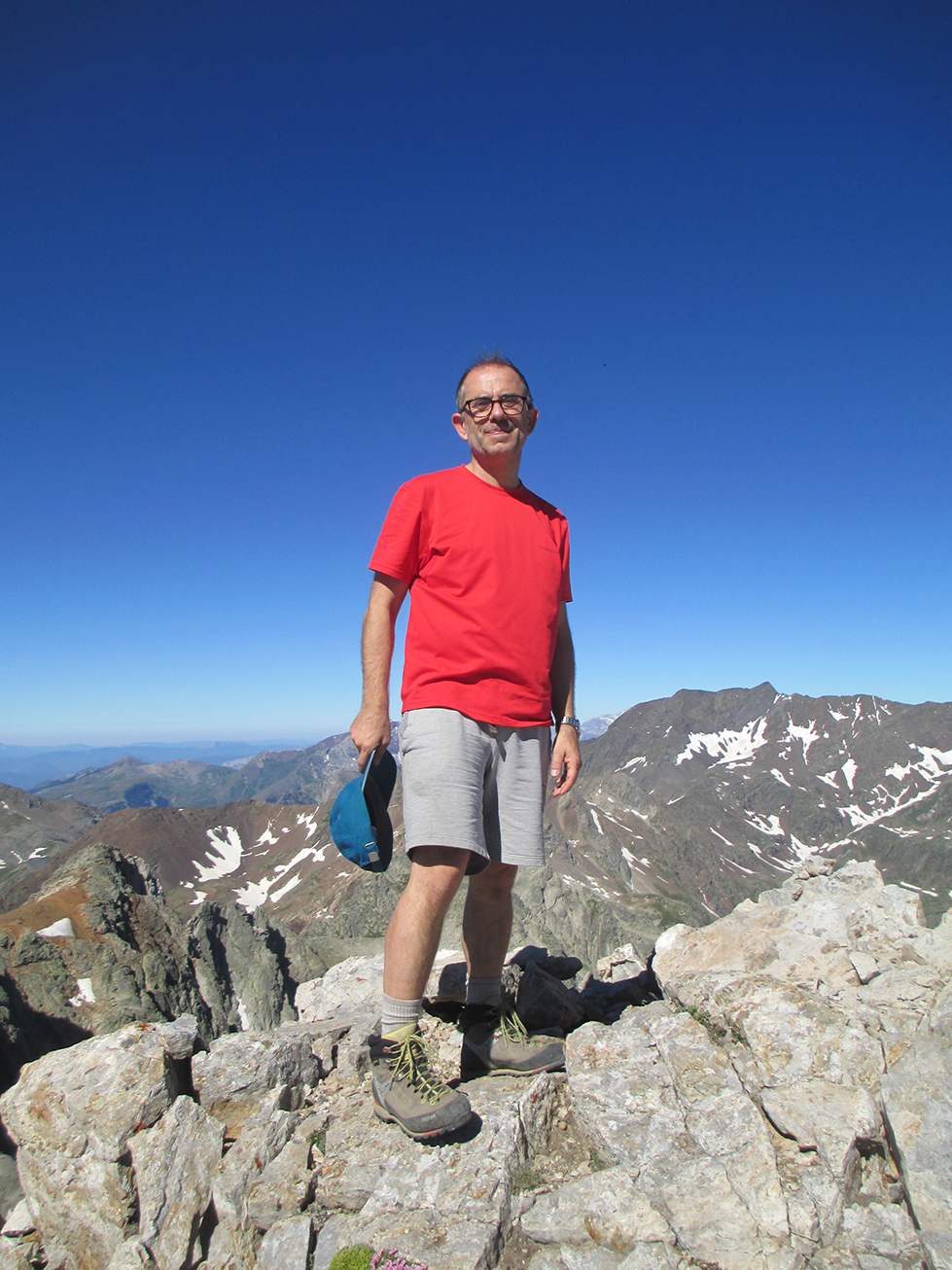 ABOUT YOU
ABOUT YOU
When did you first find out that you wanted to be scientist?
During my last university courses I enrolled as an assistant student at the Department of Microbiology, which had good lecturers and scientists pioneering Microbial Ecology. Suddenly I found myself in a very attractive atmosphere full of ideas, problems and solutions, experimental designs and field trips. This world fascinated me and I realized that I wanted to be part of it.
Tell us something about your background and main research interests
I started in limnology, studying the microbes of a very small lake (Lake Cisó, Banyoles, Girona). Probably this is the lake with more papers published by unit area! I used the microscope to count different types of microorganisms, and tried to find out their trophic roles and interactions. I got tied to a particular group of cells, small protists that lacked plastids and fed on bacteria. Then, I was lucky enough to participate in the molecular revolution, the use of molecular tools to study the species composing these assemblages.
In plain words…what is the principal aim of your current investigation?
I am studying the ecological role of small unpigmented protists that populate aquatic systems. These microorganisms are the main bacterial grazers and also parasites. I am studying the phylogenetic diversity of these assemblages, mostly formed by unknown and uncharacterized species, and I am trying to elucidate the functional implications of this diversity. In short, which lineages of small heterotrophic protist are there and what are they doing?
What do you like doing in your free time?
I like being in the countryside, walking historical trails, climbing mountains, and exploring our human and rural environment. This is best when I can do it with my family. I also like riding the bike, as another way for exploring the surrounding. I have been playing soccer my whole life, and I am still doing it with people of my age. In addition, I like music and have been always singing in a choir.
Which is the best advice you have ever received in science?
Keeping the balance was never a formal advice, but was something that I learned early on from my PhD adviser, who encouraged me when I was discouraged, and turned me down when I was excited. Another important advice was to look for original ways to solve general problems.
ABOUT THE PROJECT
In non scientific words… What is your role in SINGEK project?
I am the coordinator of the project. A few years ago I felt the potential of Single Cell Genomics for resolving critical questions in Microbial Ecology and Evolution and found the opportunity through the ITN call to set up a consortium to promote this topic. I prepared the general structure of the project, made the contacts with the partners, and did most of the writing with the help of many others. Now that the project has been funded, I am taking care of the general functioning of the project at the same time that I am leading one of the 15 PhD individual research projects.
How do you think your work in SINGEK will contribute to the research field of Single Cell Genomics of microbial eukaryotes?
When I look at the people involved and the research topics proposed, I am convinced that SINGEK will make a profound advance in Single Cell Genomics. Truly, this field is in its infancy and there are many optimizations still needed in cell sorting, sequencing and bioinformatics. Through the collaborative energy of the different teams I can see how SINGEK will fully explore and exploit the potential of this approach.
In plain words…how do you think SINGEK will contribute to better understand the living world?
We know today that microbial diversity is very large and largely unknown. Many microbial species living in the environment have not been characterized, and this is because they have escaped isolation in pure culture. Single Cell Genomics is a novel tool that allows accessing the genome information of these unknown species. It is widely recognized that genome sequences can provide fundamental clues about the biological properties and evolutionary pathways of the existing microbial species.
How do you recommend people to follow your research activity?
The SINGEK webpage includes the basics of the project, both the scientific ideas and the people involved. This is a good starting point. Then, a primary goal as scientists is to present our results and advancements in scientific papers, which will be also accessible at the webpage. I am not myself involved in social networks, but the SINGEK project also has a Facebook and Twitter profile for a more dynamic and instantaneous follow-up.

